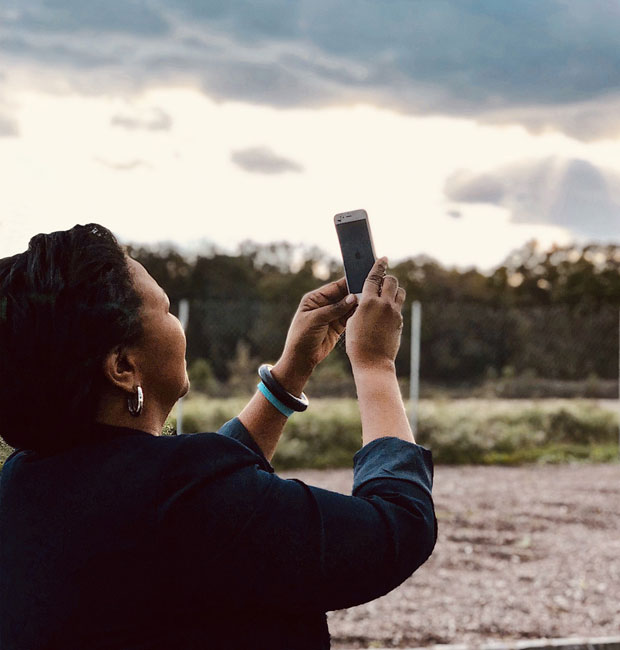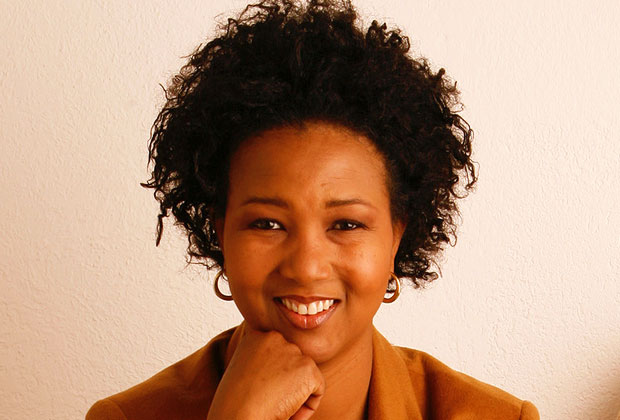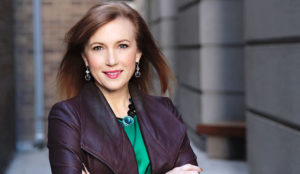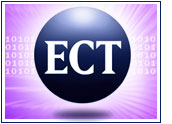Dr. Mae Jemison and I have a few things in common. We both grew up in houses that had scary basements with cobwebs, coal bins, and wringer washing machines. We both wore out our Chicago Public Library cards. We both were tormented by siblings but taught by our parents to stick up for each other, which we did. I memorized the soundtrack of West Side Story word-for-word; Jemison danced in a production of the show.
The list of similarities doesn’t stretch too long, however. She was a skinny black girl who lived on the South side, and I was a chubby white girl who lived on the North side. Not to knock my own accomplishments, but I didn’t graduate from high school at 15, as Jemison did, or go on to earn an engineering degree from Stanford or a medical degree from Cornell.
I didn’t serve in the Peace Corps in Sierra Leone and Liberia or work as a doctor in a Cambodian refugee camp.
You won’t find my likeness on a LEGO figurine meant to inspire children because I didn’t become an astronaut. I liked thinking about space, but Jemison went there — and she was the first woman of color who did. To say that there just isn’t another Earthling like Mae Jemison is not an overstatement.
Jemison has served on numerous boards and task forces. She founded a consulting company and a science camp. She’s been named to the National Women’s Hall of Fame, the National Medical Association Hall of Fame, the Texas Science Hall of Fame, and the International Space Hall of Fame. She has received the National Organization for Women’s Intrepid Award and many other awards and honors.
I recently had the opportunity to speak with her, and although she shared some illuminating recollections of her mission on the Space Shuttle Endeavour in 1992, her experiences as an astronaut were neither the starting point nor the ending point of our conversation. This extraordinary woman’s career is too packed with present and future endeavors to dwell very long on her stellar past.
She currently leads 100 Year Starship, a nonprofit initiative to build a foundation for interstellar travel within the next hundred years.
Jemison also leads Look Up, a movement that encourages people to connect with the sky above us on one day each year. Participants collaborate on weaving a global tapestry of Skyfies — sky selfies — accompanied by reflections on their feelings, thoughts, hopes, and needs as they look up. This year’s Look Up day was Oct. 18.
In the Library
Though Jemison’s path has been far different from mine, our conversation started with an important influence in both of our young lives: many hours spent in libraries, making discoveries, and imagining possibilities. Jemison shared her concern that the search engines we now rely on eliminate a crucial part of learning that can take place only in the presence of physical books on shelves.
“I remember as a little kid — six years old, seven years old — going with my brother and sister and mother to the library, and there’s something that’s very special about being there with other people,” she recalled. “You really get to search through books and things that are adjacent on this side or on that side and get to walk through rows and see all of these ideas. And it’s a little bit different — in fact, I think it’s quite different — than where the search engines are taking us these days, where search engines take you to places that they want you to see, based on their algorithms, based on their idea of ‘Did I make a profit off of this or not? Did I get paid for it?’
“That’s a very, very different experience, and it’s a very truncated experience,” Jemison said.
Even now, when she’s engaged in research, some of the most fundamental things happen when she starts looking for material and finds books or research articles adjacent to the volume she was looking for, she pointed out. It’s a fundamentally different process from being directed by a search engine to see what it wants you to see.
Jemison is an advocate of reading as a way to explore with your mind and “create the footpath” toward achieving goals. Allowing scope for the imagination is critical to children’s learning, she said.
“People always say, ‘Well, the kid plays with the box instead of the toy,’ right? It’s because sometimes the [toy] is too concrete,” Jemison explained. “And these days, we have these experiences that are so concrete that it doesn’t challenge the individual to think about the world and to explore possibilities. I mean, I’m not saying it’s not important to have concrete ideas, and be very disciplined and know there’s factual things and all of that — but there’s also a different part of play, which allows you to expand and try new avenues.”
Look Up
One of Jemison’s current passions, Look Up, began with a conversation she had with LeVar Burton and Jill Tarter following a South by Southwest panel discussion a few years back. Burton and Tarter are both on the 100 Year Starship advisory board.
Burton is famous for his portrayals of Geordi La Forge in Star Trek and Kunta Kinte in Roots, among many other acting credits. He’s also well known as the host of the long-running educational program Reading Rainbow.
Astronomer Jill Tarter, cofounder of the SETI Institute, is a pioneer in the search for extraterrestrial intelligence. Carl Sagan’s novel Contact and the film based on it feature a protagonist whose character is informed by Tarter’s work.
That pivotal conversation involving Jemison, Burton, and Tarter centered on how to connect people to space.
“We were really working very hard on that,” Jemison recalled, “so we actually thought that in some kind of way, we have to get back to folks thinking about the world as connected. And in fact, Jill talked about the fact that if we don’t consider ourselves as ‘Earthlings’ … that’s a major concern. All the work that I’ve ever done since I’ve come out of NASA is really about ‘how do we connect with each other on this planet?'”
That conversation led to Look Up.
“One of the things we have to do is understand that we’re inextricably connected to this planet,” said Jemison. “Our biology, our rhythms, our cycles, our knowledge is connected to this planet. Yet at the same time, we’re connected to each other across this planet and the greater universe. So it was really, how do we get this sense of being? The sky is one of those things that’s a transition point. You know, it connects us. What if one day we just stopped looking down, and we looked up?”

Although it’s still a nascent movement, Look Up picked up some steam this year. For the first time, participants could contribute their own sky images and messages using the new mobile Skyfie app. They were able to upload them to a global tapestry and then “spin the globe” to see what others were seeing and thinking.
People stayed on the app, which was introduced just in time for Look Up’s designated 24-hour period, for 10-15 minutes, Jemison noted. There were contributions from every continent.
Pondering the theme of connections that Jemison emphasized so strongly, I wondered about her use of the word “Earthlings” rather than, say, “humans.”
“Well, you know Jill came up with it” as a way to counter the human tendency to separate, she said. “So the plants are Earthlings, the microbes are Earthlings, my cat is an Earthling. We’re all tied together.”
Jemison recalled a conversation she had with a group of students on Oct. 18 — Look Up day.
“We were talking about Earthlings, and if you went to Mars, would you be a Martian? And they said, ‘No, you’re still sort of an Earthling, but you’re a human-ling.’ You know, you don’t change — you’re still connected.”
Those connections that can be felt so strongly when we look up at the sky can have a powerful influence on the world beneath our feet. With all of the knowledge and capabilities we have, how does an organization like the United Nations, for example, push for sustainability goals?
“How do we get clean water to everyone, and those kinds of things? We already know how to do this,” Jemison said.
“We have the capacity to feed everyone on this planet, right? … We have the capacity to educate all children. All of those things are possible. That doesn’t mean we can’t go to space. We can do all of this without sacrificing the quality of life from one society to another. “But part of the issue is really we don’t — we don’t care about other folks.”
I suggested that we don’t think of ourselves as planetary citizens. We think about little divisions and disagreements instead of thinking in terms of how we can solve problems as a unified people.
“Nature connects us,” Jemison laughed. “It really doesn’t give a damn about those ideas that we come up with — those divisions and things. It really doesn’t care. … When the distractions separate us… the noise is louder than ever… look up at what’s common to all of us: the sky, weather, what passes through.
“What’s above us unites us,” she continued. “That’s the sky, if we can just start to think that every group of people has looked up at the sky. The African proverb says, ‘No one shows a child the sky.’ It’s something that we do. It’s common. The mystery about the stars. What is the sun? … That people look up with hope. You know, it’s almost universal.”
Not Lost in Space
We all can heed Jemison’s call to look up, but very few of us can travel to where she’s been. I asked her how actually being in space changed her thinking.
“I’m going to get rid of the overview effect real quick,” she said. “The overview effect where people say, you know, astronauts look down and ‘everything important to me in the entire universe is on this planet.’ And that I realized that there were no borders — there’s this whole mantra about that.
“That didn’t happen to me. I never thought that,” Jemison continued. “I never just thought that the Earth was the center of the universe — I don’t think it now. I never thought that those borders that people draw on maps actually existed. I knew that those were constructs they had in their mind. I never believed that people were that fundamentally different from one to the other.”
What being in space did do for her, she said, “was it confirmed something that I’ve always believed — that the Earth will be here. We may not. You know, when you see this thin, shimmering layer of blue light that’s our atmosphere, you recognize that we don’t have to be here. This planet that offers us so much — it will be here, but humans don’t have to be here. We just have way too much hubris in thinking that we can exist without the Earth. We can not.
“Now, the other thing I felt is that I felt very connected with the rest of the universe,” Jemison said. “That was maybe the pivotal moment for me. I was thinking, would I feel lost? But I could imagine myself in a star system 10,000 light years away, and I felt connected. And that was like fundamental — that connection.”
Was there ever a moment in her life as an astronaut, I wondered, when she was out there in space when she felt fear?
“I actually tried to make myself afraid while I was up,” Jemison said. “I did… because I was feeling way too jazzy. Way too mellow, right? And I couldn’t because I really felt that connection. It was as though everything was OK. I was connected.
“It was calm, and it was very centered, and you could deal with lots of things,” she recalled. One of those things was that “the world lives on, but I should always be prepared to die. Not to be here. And what would I want to be like at that time?”
Jemison was in the first class of astronauts after the Challenger accident, and she noted, in what I viewed as a considerable understatement, that she had done things that were not risk-free prior to ever joining the astronauts. She worked as a doctor in a Cambodian refugee camp while in the Peace Corps, to cite just one example.
“You know, it was a matter of steadying yourself and feeling very comfortable about things,” she said.
Alternative Adventures
Although most of us won’t get to venture where Jemison has gone, we can get a taste of experiences that otherwise would be inaccessible to us through technology — virtual and augmented reality, for example.
Jemison recently took part in Defying Gravity: Women in Space, a mixed-reality experience brought to life through Microsoft’s HoloLens. I asked her about the usefulness of virtual and augmented reality.
One thing she worries about, she said, is “people not being freed up to use their imagination enough. So they exercise their brain cells, right? To come up with new things — or to come up with other perceptions. So I think virtual reality and augmented reality allow you to maybe explore and walk around something that you wouldn’t be able to. And if you feel like you’re physically there, what does that capture for you? That could be really exciting.”
She recalled visiting the Museum of Science and Industry in Chicago when she was a young girl.
“There was this exhibit … I think it was the street of yesteryear or something. It was like a turn-of-the-century street with cobblestones and silent movies and all of that. I was just absolutely fascinated by it because it was sort of like, now I have to stop and think, what might life have been like then? What could you do? So augmented reality could bring us that as well — as long as we encourage folks to think beyond that, not just to walk through it. So I think there are some really powerful pieces to it.”
Space Settlements
I asked Jemison about the future of human space exploration, and though she firmly rejected the use of the word “colony” to describe any settlements that might result, she did say she knew that we could do it, depending on our commitment.
“What it would be like depends very much on who’s involved,” she said. “So my big task with space exploration has been to get more people involved. And my big task in science has been, ‘How do we get more people involved?’ In fact, the proposal for 100 Year Starship was ‘An Inclusive Audacious Journey Transforms Life Here on Earth & Beyond.’ The first word is ‘inclusive’ because I think we come up with the best solutions and the best possibilities when we have more perspectives on board.”
I wondered whether a continuing commitment to work on 100 Year Starship and other paths to advance space exploration might help solve some of planet Earth’s most pressing problems.
“For 100 Year Starship … the way we look at it is that most of the major problems we have to solve very much mirror the challenges that we face on this starship — that we face on Earth today,” Jemison said. It’s crucial to bring in a variety of people, she pointed out — social scientists, physicists, material scientists, artists, and storytellers.
“Pursuing the extraordinary gives us something that we can build on today,” she continued, “and the other part of this is that people need an adrenaline rush. We need adrenaline as humans. And right now, all of our adrenaline — so much of our adrenaline — is being generated by fear and war. Those things are not really going to hold you in good stead in the long run, but they’re an easy way to generate adrenaline.”
Because in addition to all of her other many roles, Jemison has been a dancer, an actor, and a writer, I asked what she thought about the importance of melding the arts and humanities with science.
“They’re all part of being human,” she said. “We see colors, we feel, we think. Anyone who tells you that science isn’t emotional is a liar. Science is creative. There’s some objectivity to it. I mean, we can look at the social sciences with some objectivity as well, right? But the reality is that what we choose to research and study is very emotionally connected. You know, the solutions that we look at many times are generated from our cultural background — generated from our experiences, which is part of our culture, right? And so… all of it… if we don’t recognize that, then we fail to come up with the kinds of solutions that make a difference.”
The perception that scientists are neither creative nor intuitive is a fallacy, Jemison said.
“They certainly are as well, and they use that to a large extent. And that’s the same thing with art and, I always remind people, with social sciences, which are really hard. Because if we think of the sciences as only the best and the purest are things that we can quantify easily… eh… it’s hard to do social sciences,” she pointed out.
“Clearly, to be human, to be part of this universe, there’s this wealth and this range of ways we interact and ways we think we know things,” Jemison said, “and to ignore any of those is to ignore a major part of the universe and our capacity to interact with it.”




















































